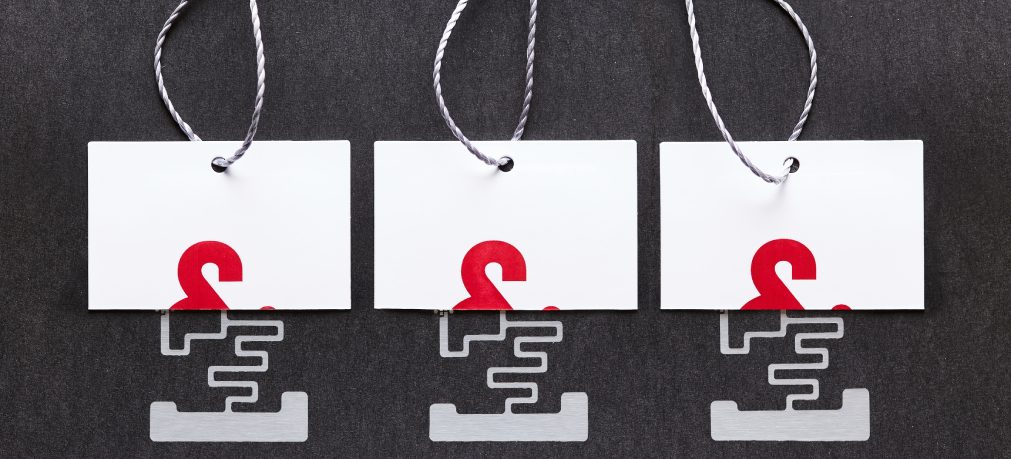Technology is present in countless aspects of our daily lives, providing us with information and facilitating and speeding up tasks that were previously carried out manually, or that were simply impossible to perform. One of these tasks has to do with the traceability of products from the origin of the raw material, its production and distribution. In the past, it was impossible to know what happened to a given good when, for example, it left the factory to the warehouse or shop of destination. Now, thanks to technology, and in particular RFID labels, any product can be accurately traced at any point in the supply chain.
What are RFID labels?
RFID (Radio-Frequency Identification) labels are electronic devices that use radio-frequency technology to identify and track objects, people or animals. These tags consist of a microchip and an antenna that allow wireless communication with an RFID reader. What characterises them?
- Variety of formats: RFID labels are available in a variety of shapes and sizes, making them adaptable to different applications and environments.
- Data storage capacity: RFID microchips can hold a significant amount of data, from basic identification information to specific details about the tagged object.
- Unique identification: Each RFID label has a unique identification (ID) number, allowing individual identification of each labelled object.
- Wireless communication: RFID labels communicate wirelessly with RFID readers via radio frequency, allowing data to be read and written without physical contact.
- Remote reading: They can be read at distances that vary depending on the type of label and reader used. Some labels can be read from several meters away.
- Durability: They are designed to withstand harsh environmental conditions such as humidity, heat, cold and shock, making them suitable for a variety of applications.
RFID labels applications: Beyond identification
Radio Frequency Identification (RFID) labels are much more than just labels. This small but powerful technology has found a wide range of applications in a variety of industries. What are its most common applications?
1. Fashion and retail:
In the world of retail and fashion, RFID labels improve customer experience and inventory management:
- Customer experience: RFID labels enable interactive shopping experiences, where customers can obtain additional product information by scanning tags with their mobile devices.
- Real-time stock management: Shops can accurately track stocks and avoid out-of-stocks, improving customer satisfaction.
2. Logistics and supply chain management:
The use of RFID labels in logistics and supply chain management has revolutionised the way products move. Some of its applications include:
- Real-time inventory tracking: Enables accurate, real-time tracking of products and assets in warehouses and during transport, reducing loss and improving planning.
- Route and delivery optimisation: They help companies identify more efficient routes and manage deliveries more accurately.
- Process automation: They automate tasks such as checking in and checking out products, which reduces the need for human intervention and minimises errors.
3. Asset management and security:
In environments where asset management is critical, RFID labels make easy:
- Access control: They are used in access control systems to ensure security in buildings, amusement parks and events, allowing or denying access to authorised persons.
- Asset tracking: They are applied to valuable assets, such as medical equipment, vehicles, and tools, making them easier to track and manage, preventing loss and theft.
4. Health and medical care:
In the healthcare sector, RFID labels improve accuracy and security:
- Medical records management: They are used to maintain accurate and accessible medical records, ensuring better monitoring of patient care.
- Monitoring of medicines: In hospitals and pharmacies, RFID labels are applied to medicines to ensure authenticity, inventory control and accurate dispensing.
5. Agriculture and livestock:
In agriculture and animal husbandry, RFID labels help to optimise production and animal tracking:
- Livestock tracking: RFID labels are applied to animals to keep track of their health, location and movements, facilitating herd management and early disease detection.
Advantages of RFID labels
- Automation and efficiency: Enable automation of processes, reducing the need for human intervention and increasing operational efficiency.
- Real-time tracking: They have the ability to track objects and assets in real time, improving visibility and decision making.
- Accuracy and error reduction: RFID label reading is accurate and reliable, minimising data entry errors and product loss.
- Security: They can be used in access control and authentication systems, improving security in buildings and events. In asset management, they prevent loss and theft.
- Supply chain optimisation: In logistics and supply chain management, RFID labels help optimise routes, reduce costs and improve inventory management.
- Customer experience: In retail and fashion applications, they enable interactive and personalised shopping experiences.
- Compliance: In regulated industries, RFID labels help comply with tracking and tracing regulations.
In short, RFID labels have become essential in many applications and industries, thanks to their ability to automate processes, improve efficiency and provide real-time visibility.



